
FUI-Bloggen
FUI är förkortningen för forskning, utveckling och innovation. I FUI-bloggen skriver Yrkeshögskolan Novias personal om sitt jobb, forskning, projektverksamhet och andra betraktelser.
Blogginlägg som är granskat av Novias redaktionsråd är utmärkta med nyckelordet "Granskat inlägg".
Vi följer CC-BY 4.0 om inget annat nämns.
SF-BioVac at EnergyWeek 2025
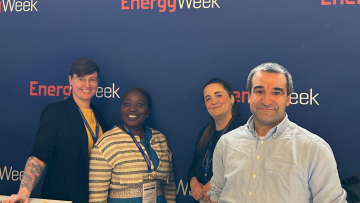
A couple of weeks ago Vaasa was busy with thousands of visitors coming in from all over the world to participate in the annual EnergyWeek event. This year was already the 14th time that the esteemed event was held, with the first one being arranged in 2012. The final event day of 2025 was Thursday and the theme of “Clean Gas Energy” offered a wide variety of programs.
The SF-BioVac project’s Main Coordinator Cynthia Söderbacka (also Project Leader for the Nature Refines project) is an EnergyWeek veteran and has had key roles in the event, functioning as both organizer and moderator on several occasions. This year, we saw Cynthia representing the biogas community on Thursday as a moderator at the second Clean Gas Energy Seminar, as well as a representative of Novia UAS in the RDI department’s booth at the Clean Gas Energy Exhibition. There she was accompanied by SF-BioVac’s project researcher Josefin Stolpe, along with representatives from other Novia RDI projects and project partners. The SF-BioVac project worked with the following projects within the Sustainable Technology RDI team;
- Nature Refines - Organic rest products as raw materials for water-cleaning & energy
- Boost Nordic Biogas
- MAP-UP-P2X - Mapping CO2 Streams in Ostrobothnia: Unlocking Potential for P2X Economy
- Power of Potatoes
- Demand Response- Promoting electricity demand response in Ostrobothnia
- VETY-osaaja (Hydrogen Master)
- Flexible Energy Systems Integration & Optimization- FESIO
- RoboCoast EDIH- The EDIH of Manufacturing Export Industry
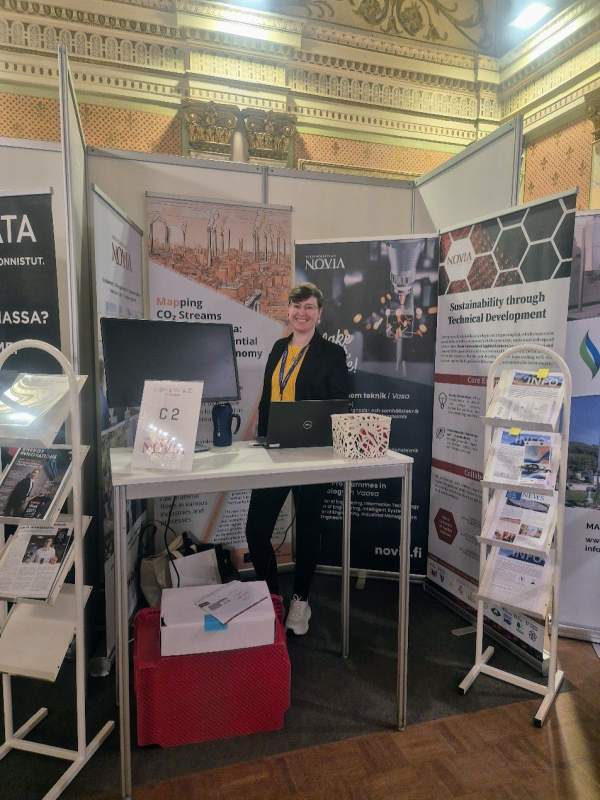
Picture 1: Josefin Stolpe ready to take on the day! Photo by Cynthia Söderbacka.
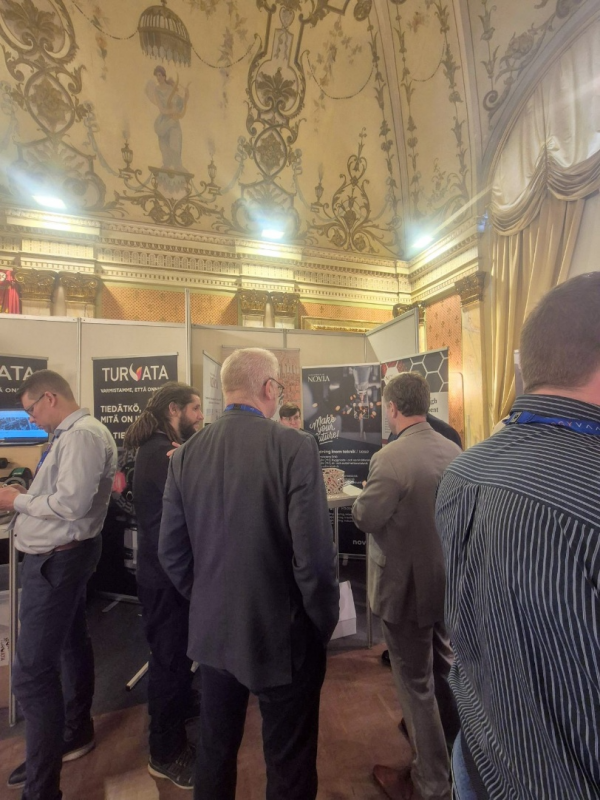
Picture 2: Discussions at the Novia UAS stand. Photo by Cynthia Söderbacka.
The exhibition sparked several interesting discussions on the topic of biogas, and much interest was shown towards SF-BioVac and the project’s model of implementing the biogas value chain in Zambian universities, as a way to learn about circular economy. We dare say that important initial contacts were made that might even bring forth implementations of the SF-BioVac model in other countries!
Whilst the Clean Gas Day showcased many parallel events, SF-BioVac’s focus was on the Clean Gas Energy Seminar 2, which Cynthia hosted in the afternoon. The theme of the seminar was, “What is the role of biogas in the green transition?”. The seminar emphasized the role of biogas as a technologically mature and available solution, and aimed at shining a light on the potential it has to support emerging green fuels.
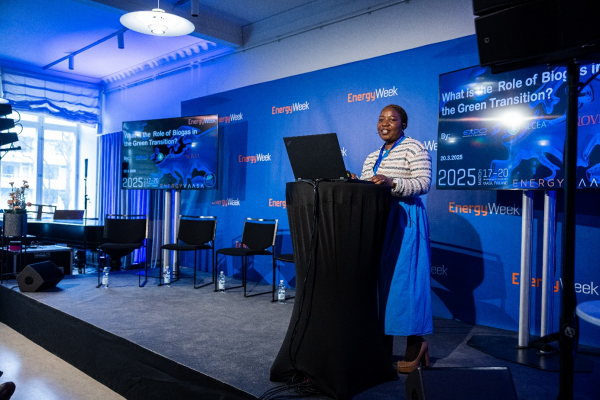
Picture 4: Cynthia Söderbacka hosting the Clean Gas Energy Seminar 2 at EnergyWeek 2025. Photo credit: Vaasa EnergyWeek / Jukka Vähälummukka
The seminar boasted an interesting lineup of experts in the biogas area. First out was Heikki Lindfors, Executive Senior Advisor in the gas market from Finnish Energy. Finnish Energy is an organization that represents companies that produce, acquire, transmit and sell different types of energy, as well as companies that offer energy-related service. Lindfors talked about biogas in Finland, giving a current and future outlook of the biogas market in Finland and the role it plays in boosting the Finnish energy systems. In his presentation, Heikki pointed out that an estimated 1 TWh is sold externally from the production sites, and this figure has been stable for some years. A 2 TWh domestic production is estimated for 2027 by Suomen Biokierto ja Biokaasu. The biggest potential for biogas in Finland lies in transportation, as the gas grid is currently only located in the southern part of the country and feedstock availability does not always match the biogas needs. Heikki concluded his presentation by pointing out that the methane infrastructure is ready, but biogas and biomethane production is an economically complex case where capitalizing on all the streams improves the viability of the biogas systems.
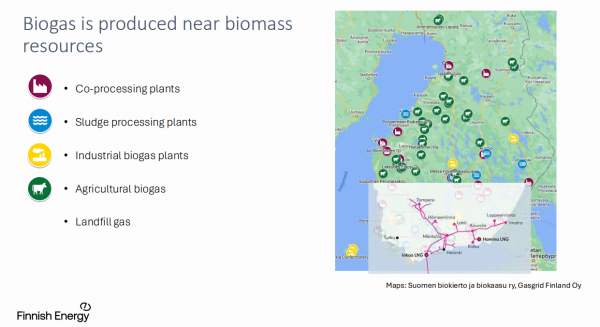
Figure 1: Gas grid in relation to biogas sources around Finland. EnergyWeek presentation by Heikki Lindfors, Finnish Energy.
Next up was Fredrik Ek, CEO at Xylo Gas Oy, a company that develops and delivers bioenergy cleantech solutions. He emphasized technological development for sustainable use of raw materials such as waste wood chips. In his presentation, Fredrik highlighted Xylo Gas’s innovative gasification technology, which produces syngas, biochar and heat, and can also be integrated into biogas plants showing how the main product affects the final cost. He further highlighted how the process flows impact the value, giving a comparison between the gasification of wood chips versus combustion. According to the presentation, Xylo Gas produces syngas with ~60% hydrogen and 30% carbon monoxide. In conclusion, Fredrik pointed out that the technology is proven but they need collaboration in order to take it to the next level: commercialization.
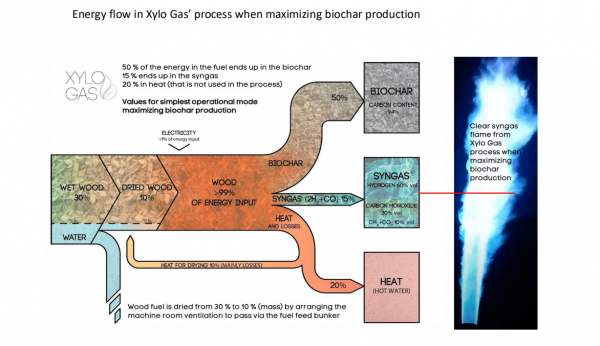
Figure 2: Producing syngas from waste wood chips using Xylo gas innovative technology. EnergyWeek presentation by Fredrik Ek, Xylo Gas Oy.
The last speaker at the seminar was Mika Kallio, Managing Director at the company Gas1 Oy, a project development company that offers comprehensive tailor-made biogas solutions. Kallio talked about Gas1 Oy’s lessons learnt from building biogas ecosystem. It was interesting to see examples that Gas1 has built such as the Hartwall Biogas Ecosystem, with the Hartwall brewery as the heart of the ecosystem. The waste from the brewery is used as feedstock in the biogas production, and the ebiogas produced used in the brewery. The digestate is used as nutrients in the locally grown barley, which in turn is used as the raw material for the brewery. He also showed the new ecosystems planned for 2025-2028, with an estimated 100 GWh ecosystem developed in two phases in Kaustinen. The pinnacle of his presentation was when he touched on the complexity of the biogas ecosystem business, the vastness of the players and connecting all the dots whilst ensuring profitability for all the parties in the ecosystem! He concluded his presentation by emphasizing the importance of collaboration and innovation in advancing biogas solutions.

Figure 3: Complexity of the biogas ecosystem. EnergyWeek presentation by Mika Kallio, Gas 1 Oy.
The speakers then regrouped for a panel discussion and were joined by Johan Saarela, Product Development Manager at the local municipally owned waste treatment company Ab Stormossen Oy. Stormossen has long been an innovative predecessor in the waste management industry in Finland and holds a respectable record when it comes to biogas production.
The panel discussion touched upon several different themes, with engaging questions coming from both the moderator Cynthia Söderbacka and the audience. The general consensus was that biogas in Finland has a future full of potential, even if the industry is now living through a period of stagnation.

Picture 5: Moderator Cynthia Söderbacka with the panelists L-R: Heikki Lindfors (Finnish Energy), Fredrik Ek (Xylo Gas Oy), Mika Kallio (Gas1 Oy) and Johan Saarela (Ab Stormossen Oy). Photo by Anna-Karin Jansson.
We already have the know-how, as well as a very underutilized source of feedstock stemming from the agricultural industry. The panel agreed that what is needed now are brave, long-term investments as well as government policies to aid and guide the industry in the right direction. Comparisons were for example drawn between Finland and Denmark, highlighting how Finland has been lagging behind whereas Denmark have done important policy decisions decades ago that are now bearing fruit.
It was also pointed out that biogas have a wider multitude of benefits than many often realize. Thus, it is important to think outside the infamous box to see all the possibilities that biogas processes can offer.
When offered the chance to end the discussion with their own final greetings, the panelist rose to the occasion with the following words:
- “It usually works out somehow”
- “Look at Gas1’s webpage, we will most certainly have good news coming up in the future.”
- “When things change, you have to change with them. Be flexible.”
- “Outlook is good, policies work. Politicians, don’t screw this up!”
Conclusion:
As the curtain closed on EnergyWeek 2025, the project team left with great insights into the Finnish biogas status and a glimpse of what the future for Zambia could be like. Looking at what was covered in this seminar and what is being done on our project, it’s good to have industrial perspectives and further grow networks to deliver up to date and relevant know-how, especially in a capacity building project such as ours. Zambia is at the beginning of its biogas journey, and the partnership with Finland is the perfect match. The seminar highlighted the importance of biogas, not only as an alternative energy solution but as an enabler for the not yet mature green solutions, as well as the opportunities that can be created in the biogas ecosystems. The lessons learnt from Finland can be taken into account when implementing the biogas competence growth in Zambia, whilst not overlooking the local perspectives.
Sources:
https://energia.fi/en/about-us/
https://www.gas1.fi/gas1-yritys
Cover picture: Novia team (Josefin Stolpe, Cynthia Söderbacka and Yvonne Dahlbäck) with SLU partner Alejandro Grimm (coordinator for the Nature Refines project). Photo by Shiva Sharma.
Texten har granskats och godkänts av Novias redaktionsråd 14.4.2025.
![]()
FUI-Bloggen
Blogginlägg som är granskat av Novias redaktionsråd är utmärkta med nyckelordet "Granskat inlägg".
Vi följer CC-BY 4.0 om inget annat nämns.
Ansvarsfriskrivning: Författaren/författarna ansvarar för för fakta, möjlig utebliven information och innehållets korrekthet i bloggen. Texterna har genomgått en granskning, men de åsikter som uttrycks är författarens egna och återspeglar inte nödvändigtvis Yrkeshögskolan Novias ståndpunkter.
Disclaimer: The author(s) are responsible for the facts, any possible omissions, and the accuracy of the content in the blog.The texts have undergone a review, however, the opinions expressed are those of the author and do not necessarily reflect the views of Novia University of Applied Sciences.
Posta din kommentar
Kommentarer
marketing-calculator.net 17 nov. 2025 16:13 (38 dagar sen)
Great information!
casino en ligne 30 maj 2025 06:10 (7 månader sen)
Thank you, Fantastic stuff.
casino en ligne
Terrific stuff, Thank you!
casino en ligne
Seriously lots of great information!
casino en ligne
Appreciate it. Quite a lot of information.
casino en ligne fiable
You expressed this perfectly.
casino en ligne fiable
This is nicely expressed! !
casino en ligne
You mentioned it terrifically!
casino en ligne France
Kudos, I enjoy it!
casino en ligne francais
Amazing write ups. Many thanks!
casino en ligne fiable
Terrific postings Thanks a lot.
casino en ligne fiable
Inga har kommenterat på denna sida ännu